How Long Does SOC 2 Compliance Take? (2025 Timeline Guide)
How long does SOC 2 compliance take? Traditional audits need 3-6 months, but AI automation cuts it to 24 hours. Learn how to get certified faster.
- Home
- Compliance HubHub
- How Long Does SOC 2 Compliance Take? (2025 Timeline Guide)
SOC 2 compliance is a journey that can range from a quick sprint to a marathon, depending on how prepared you are and which type of audit you pursue. Companies often ask "How long will it take to get SOC 2?" (especially if a big sales deal is on the line). The short answer: it can take anywhere from a few months to over a year to achieve SOC 2 compliance without automation. But with the right tools and approach, that timeline can shrink dramatically. In some cases, companies achieve initial audit readiness in mere days.
In this comprehensive guide, the timelines for SOC 2 Type I vs Type II audits will be broken down, along with the factors that influence how long it takes, and how new automation platforms are enabling companies to go from zero to SOC 2 in record time. By the end, you'll know exactly what to expect and how to accelerate your path to SOC 2 compliance.
SOC 2 Type I vs Type II: Which Takes Longer?
Before diving into timelines, it's crucial to understand the difference between SOC 2 Type I and Type II, because it heavily affects how long your compliance process will take.
SOC 2 Type I is a point-in-time audit of your controls. It evaluates the design and implementation of controls at a specific moment (like "As of October 30, 2025"). It's like a snapshot of your security practices on a given day.
SOC 2 Type II is a period-of-time audit. It assesses both the design and operating effectiveness of controls over an observation period (typically 3 to 12 months). The auditor will verify that you didn't just set up controls, but that you consistently followed them over a span of time.
Because of this difference, a Type I audit can be completed much faster than a Type II. Type II requires maintaining controls for months and collecting evidence throughout that period, which inherently lengthens the process.
SOC 2 Type I Timeline: How Long Does It Really Take?
For a first-time SOC 2 Type I, the timeline is relatively short. In most cases, a SOC 2 Type I audit takes around 1 to 3 months from start to finish, assuming you're starting from scratch on compliance:
→ Preparation (Readiness) (Approximately 1 to 3 months)
This is the pre-audit phase where you implement any missing security controls, write policies, and gather documentation. If your company already has many controls in place, this could be closer to a few weeks. If not, it might take a couple of months to get ready. With expert guidance or automation, this phase can be sped up significantly.
→ Point-in-Time Audit (About 2 to 5 weeks)
The actual Type I audit (when the CPA auditor evaluates your controls) usually spans a few weeks. Since it's a point-in-time check, the auditor will review evidence that your controls exist and are properly designed as of the audit date. You'll need to respond quickly to any auditor requests during this period to keep it moving.
→ Report Issuance (Roughly 2 to 6 weeks)
After evidence review, the auditor compiles the SOC 2 Type I report. They'll send you a draft, you'll address any comments, and then they issue the final report. This reporting step can take a month or more depending on the firm's process and any revisions needed.
Total Time for SOC 2 Type I: In practice, many organizations complete a Type I in about 5 weeks to 2 months once the audit begins, not counting prep. Including the preparation phase, expect roughly 2 to 3 months in total if you're doing it manually and starting from ground zero.
However, with modern automation platforms like Comp AI, this timeline can be dramatically compressed. Companies using Comp AI can achieve Type I audit readiness in as little as 24 hours, eliminating months of manual preparation work.
Industry tip: If you're in a hurry to show compliance (say a big customer is asking for a SOC 2 report ASAP), doing a Type I audit first is a common strategy. A Type I can be turned around faster since there's no long observation period. This gives you a SOC 2 report in hand to satisfy stakeholders while you work toward Type II. Many organizations will do a Type I as a quick win to validate controls and buy time before the Type II.
SOC 2 Type II Timeline: Complete Breakdown With Observation Period
A SOC 2 Type II compliance project will take longer, primarily because of the mandatory observation period. Here's a breakdown of the timeline for a typical Type II:
→ Preparation (Readiness) (About 1 to 3 months, similar to Type I)
You need to have all required controls in place before the observation window starts. If you already did a Type I, you likely just need to fix any gaps found and you can start Type II relatively quickly. If not, you'll spend time implementing controls, policies, and tools until you're confident everything meets the SOC 2 compliance requirements.
→ Observation Period (Minimum 3 months, up to 12 months)
This is the defining feature of Type II. You and your auditor will agree on an audit window during which your controls must operate effectively. The shortest window allowed is 3 months, though many companies (especially larger ones) opt for 6 or 12 months. Early-stage companies often choose a 3-month window to get the report faster, whereas mature organizations might do 12 months for a more robust audit. During this period, you'll be collecting evidence continuously to show your controls working over time.
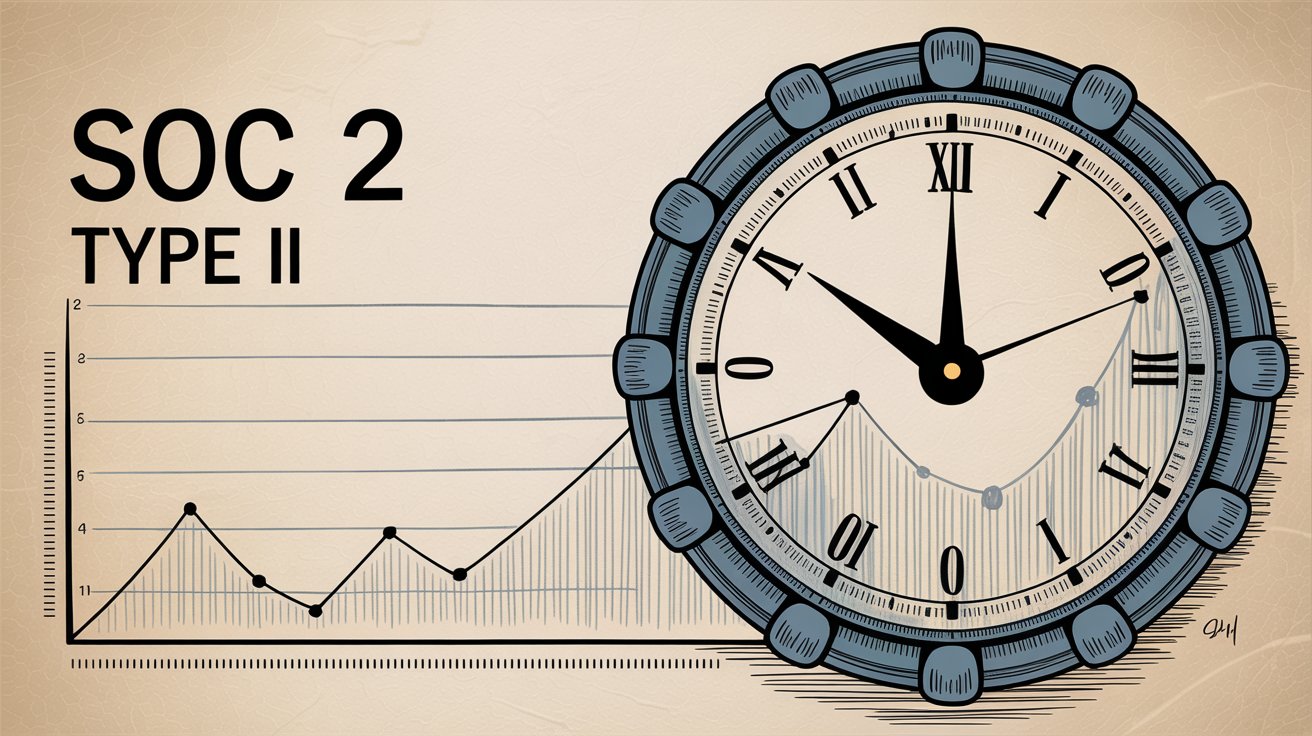
→ Audit and Evidence Review (Approximately 2 to 5 weeks)
Once the observation window ends (or even overlapping the tail end of it), the auditor digs into all the evidence collected. They test samples from throughout the period to ensure controls operated consistently. Because there's more data to review (logs over 3+ months instead of a single point in time), the audit fieldwork for Type II can last a few weeks up to a month+. Your responsiveness to questions will help determine if it's on the shorter or longer side.
→ Report Issuance (Around 2 to 6 weeks)
The auditor compiles the SOC 2 Type II report, which is typically a bit longer than a Type I report since it covers a period. Expect a draft within a few weeks after fieldwork, then the final report a couple weeks after that, once you've reviewed it.
Total Time for SOC 2 Type II: If you include everything (prep + 3-month minimum window + audit + report), the fastest possible Type II from start to final report is roughly 4 to 5 months in an ideal scenario. More commonly, companies spend 6 to 12 months for their first Type II. For example, you might take 2 months to get ready, choose a 6-month audit window, and then another 1-2 months for the audit and reporting, totaling around 9-10 months.
Keep in mind that 3 months is an absolute minimum for the audit period, set by the SOC 2 standards and common auditor practice. No matter how efficient you are, you can't have a legitimate Type II report in less time than that, because the auditors need to see a track record of operations.
Summary of Traditional Timelines: Industry resources and firms often cite the following rules of thumb:
- SOC 2 compliance can take 6 to 12+ months for most organizations
- A first SOC 2 Type I might take around 3 months, and a Type II around 6-12 months, depending on readiness
- As one auditor commented, even for a well-prepared team, 3 months is usually the shortest engagement for a Type II (with automation of evidence during those 3 months), whereas many projects run 6+ months
- Without any outside help or automation, it could stretch to 12 to 18 months in challenging cases (especially if your company has to build a security program from scratch)
The good news? It doesn't have to take that long if you leverage modern techniques.
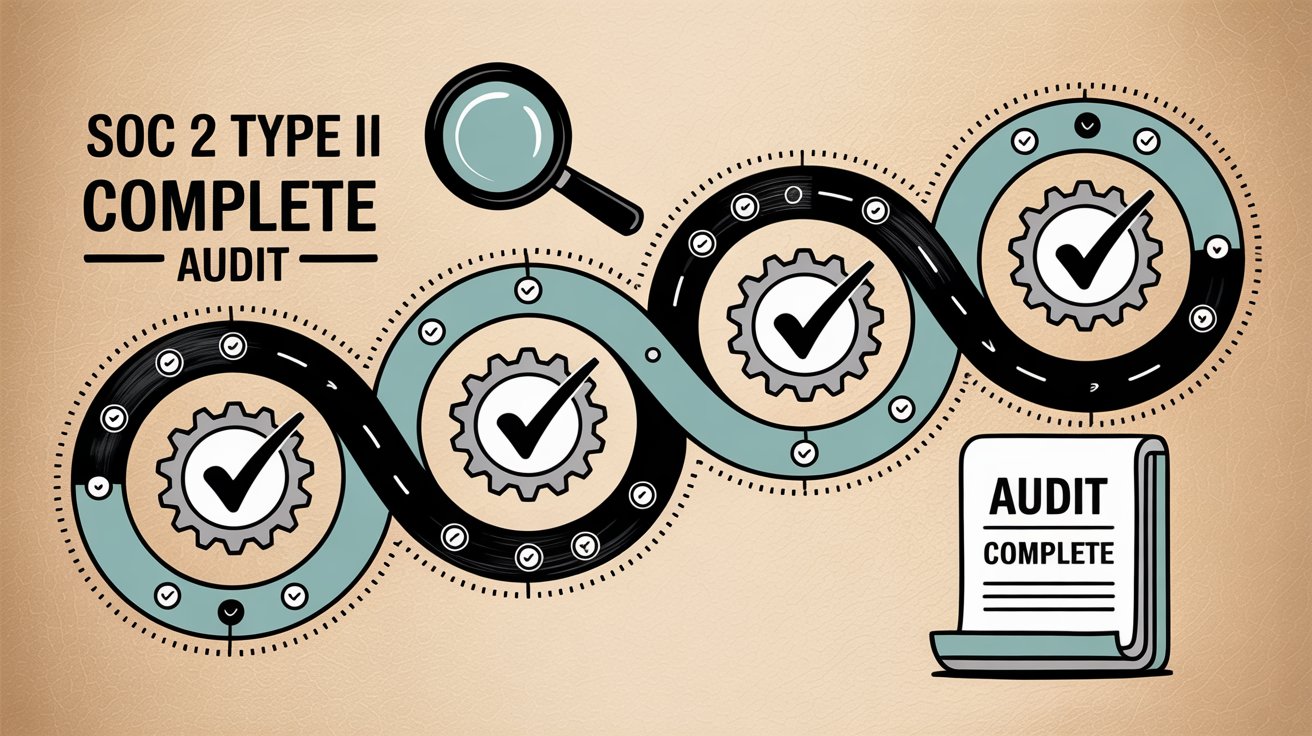
What Factors Affect SOC 2 Compliance Timeline?
Why do some companies get SOC 2 in 4 months while others take over a year? Several key factors will determine where you fall on that spectrum:
- Initial Security Maturity
If your organization already has many security controls and processes in place (logging, access controls, documented policies), you're ahead of the game. Less mature companies will spend longer in the preparation phase establishing all these controls.
- Scope and Criteria
The more systems and trust criteria in scope, the more work. Limiting scope to what's necessary can shorten the timeline. For example, including only the Security criteria (which is mandatory) and perhaps Availability might be faster than also including Privacy, Confidentiality, and other optional criteria, which add more controls to implement.
- Internal Resources and Bandwidth
Do you have a dedicated team or person driving the compliance project? Organizations that allocate sufficient resources can move faster. If it's an "on the side" project for an already busy engineering or ops team, it will likely drag out longer.
- Documentation Readiness
A lot of SOC 2 is paperwork: policies, procedures, diagrams. If you have these documents ready (or templates to follow), prep is quicker. If you're writing policies from scratch and hunting down documents, it adds time.
- Complexity of Tech Stack
A simple cloud-based SaaS with one product is easier to audit than a company with multiple products, on-prem systems, and complex infrastructure. More moving parts mean more controls and evidence to manage.
- Responsiveness
During both preparation and the audit itself, how quickly your team responds to requests matters. For instance, if an auditor asks for an extra piece of evidence and you take two weeks to find it, that's an extra two weeks added. Being prompt with follow-ups keeps the timeline tight.
- Auditor Scheduling
Sometimes the timeline isn't only in your hands. Auditors might have availability constraints. A top-tier audit firm may not be able to start your engagement immediately. Starting your audit sooner (or using an auditor that can accommodate your timeline) will affect when you get the report.
- Use of Automation Tools
This is a big one. Modern compliance automation platforms can significantly speed up the SOC 2 process. They automate evidence collection, monitoring, and even policy generation. By reducing manual effort and errors, they compress the timeline. In fact, companies using automation often complete SOC 2 in half the time compared to doing it all manually.
Think of these factors as levers. A small startup with a solid security foundation, using automation and a motivated team, might blaze through SOC 2 in a few months. A larger company without those advantages might slog for a year.
Example: In one discussion, a user described their SOC 2 Type II journey: around 2 months of prep, a 6-month observation period, plus a few weeks of audit, totaling about 8+ months. Another commenter pointed out that with the right tool, they managed it in around 3-4 months including the audit. The difference? The second case likely had better preparation and automation.
The takeaway is clear: you can control some parts of the timeline (like how prepared and organized you are), while other parts are fixed (the audit window).
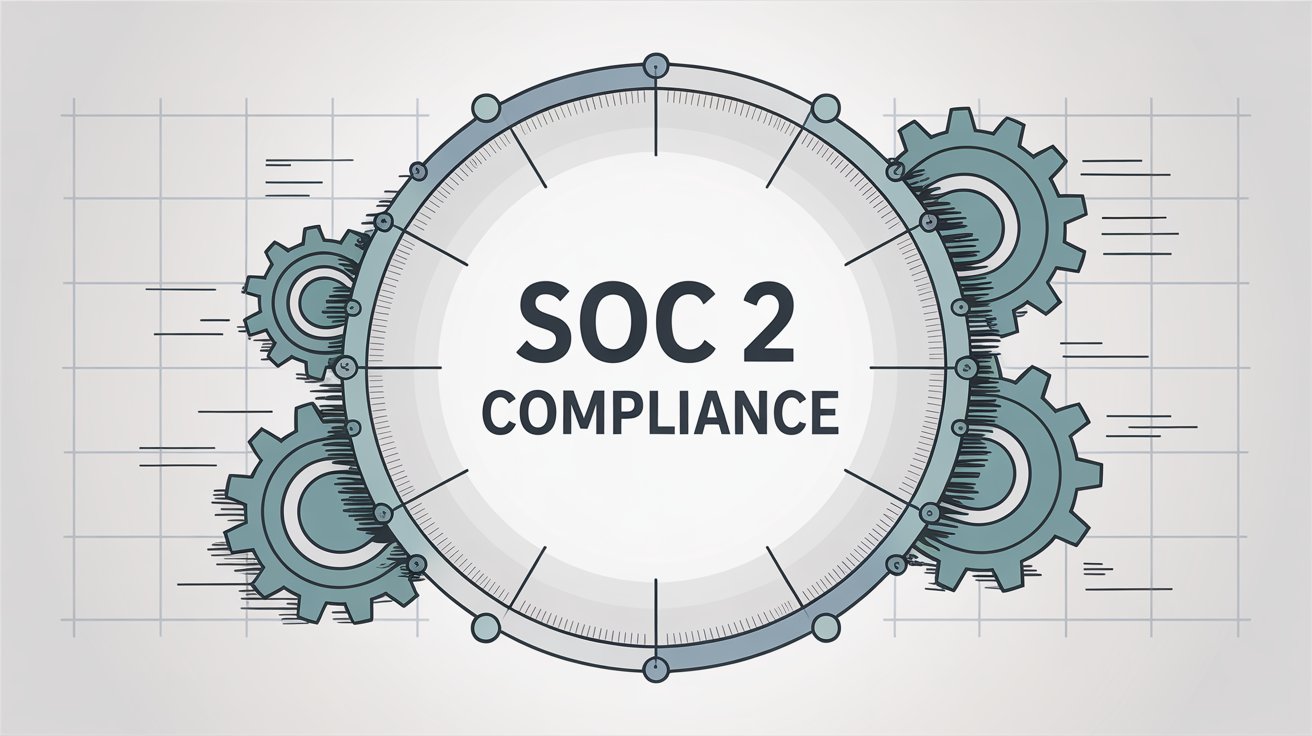
How to Speed Up SOC 2 Compliance: Proven Strategies
If the prospect of spending 12+ months on SOC 2 makes you cringe, you're not alone. Startups especially often need a SOC 2 report yesterday. Lengthy compliance projects can mean delayed deals and lost revenue. Fortunately, there are proven ways to accelerate the SOC 2 timeline without cutting corners on security or quality.
Use Compliance Automation to Cut Prep Time by 50%
Perhaps the most impactful decision is to use a compliance automation platform instead of managing everything in spreadsheets. These tools connect to your systems and automatically collect evidence (user lists, configuration screenshots, audit logs) on an ongoing basis. This automation can cut the compliance prep time dramatically, by 50% or more.
Comp AI takes automation even further, targeting a 100% automation rate where AI agents handle all the tedious tasks. No more chasing screenshots or manually updating docs. The less manual busywork on your plate, the faster you can get audit-ready.
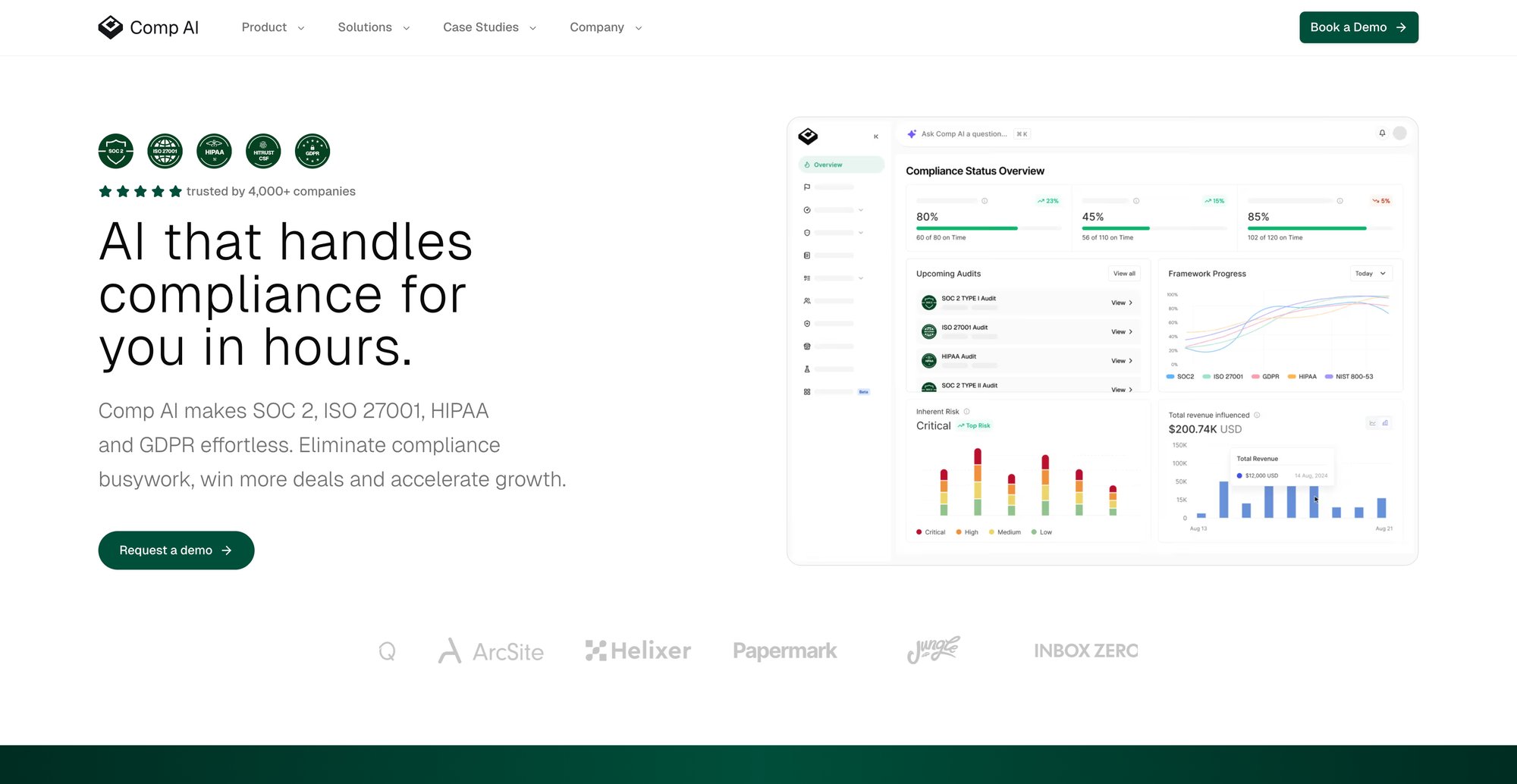
Get Expert Support: Why White-Glove Service Matters
Time is money, and expertise accelerates time. Engaging a compliance expert or service can avoid trial-and-error delays. This could mean hiring a consultant or using a platform that includes hands-on support.
For example, Comp AI provides 1:1 Slack support with compliance experts who guide you in real-time. Instead of you figuring out each control, an expert can tell you exactly what to implement, review your evidence, and even help draft policies correctly the first time. That guidance can save weeks that might otherwise be spent researching "what does this control mean?" or fixing mistakes. In short, don't go it alone if speed is a priority.
Start With Pre-Made Templates and AI-Generated Policies
One of the slowest parts of early compliance is creating documentation (security policies, risk assessments). To expedite this, lean on templates and AI-generated docs. If you're using an automation tool like Comp AI, you'll typically get a full set of pre-written policies and procedures tailored to you, which you can tweak rather than write from scratch. This could eliminate dozens of hours of writing and review.
Limit Your Audit Scope to Core Systems Only
Only include systems and criteria in SOC 2 scope that truly need to be there. Every system you include (like an obscure internal tool) is another thing to secure and show evidence for. Start with the core systems that store or process customer data, and exclude those that don't impact customer trust.
Similarly, while SOC 2 offers five Trust Services Criteria (Security, Availability, Processing Integrity, Confidentiality, Privacy), you are only required to include Security, and the rest are optional based on customer needs. If none of your customers are asking about Privacy and you don't handle personal data, you could defer adding the Privacy criterion for now. A focused scope means less work and a faster audit.
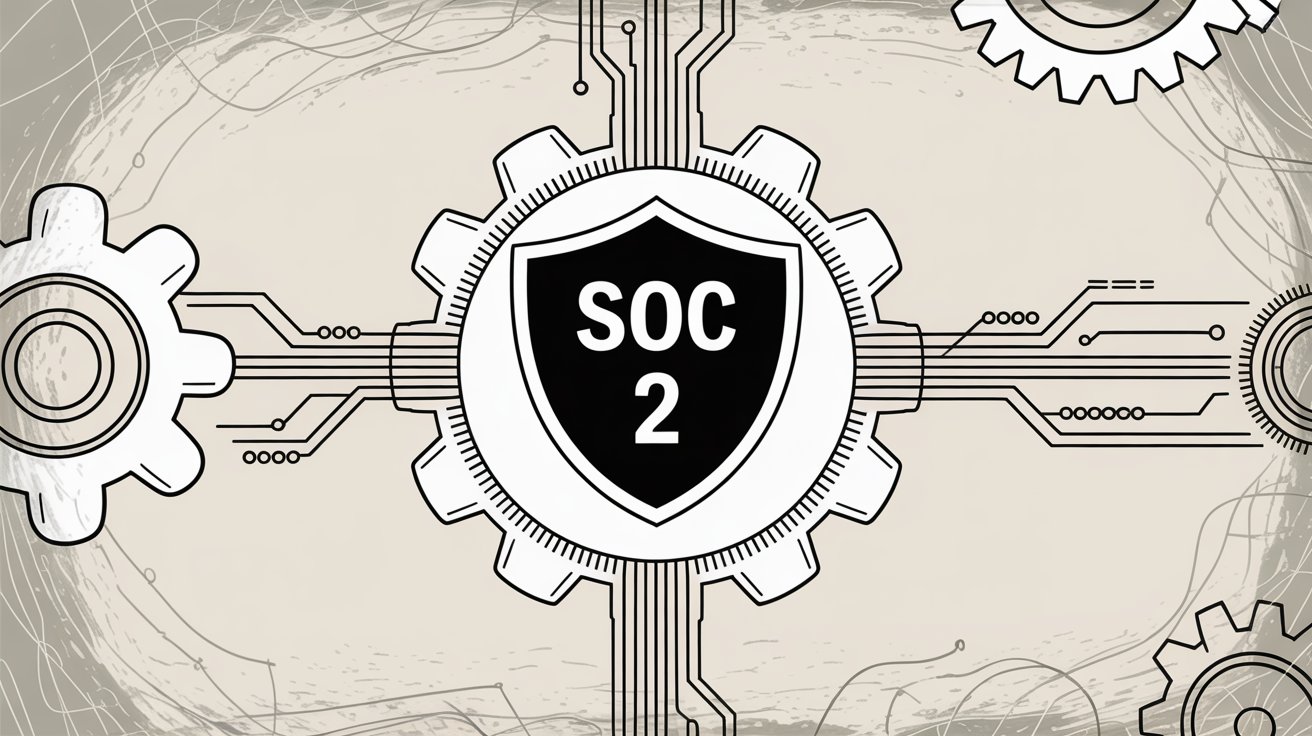
Choose a 3-Month Observation Window for Faster Type II Results
You typically get to choose how long your Type II observation period is (with auditor agreement). If speed is crucial for your first SOC 2, opt for the minimum 3-month window. This way, you'll have a report in hand as early as possible. You can later move to a 6-12 month cadence for subsequent audits. Early-stage companies commonly do a 3-month audit period to get their SOC 2 report back faster.
Schedule Your Auditor Early to Avoid Delays
Don't wait until after all prep to engage an auditor. Reach out early and lock in audit dates. Some compliance platforms (including Comp AI) connect you with pre-vetted auditors who are familiar with the automation platform and can start quickly. This not only saves you time finding an auditor, but also can shorten the audit itself since the auditor can leverage the organized evidence in the platform.
Maintain Continuous Compliance to Save Time on Renewals
This tip is more about not losing time in the future. Once you get that first SOC 2, you'll need to renew it annually. Companies that don't keep up with controls during the year end up scrambling and effectively re-doing much of the work, making the next audit take just as long as the first.
Avoid this by continuously monitoring and fixing issues throughout the year. Modern platforms will do this by alerting you in real-time if something goes out of compliance (like a new hire without security training, or a misconfigured server). By fixing those immediately, you ensure your next audit is smooth and fast. Essentially, staying ready means you don't have to get ready again, saving months of effort each year.
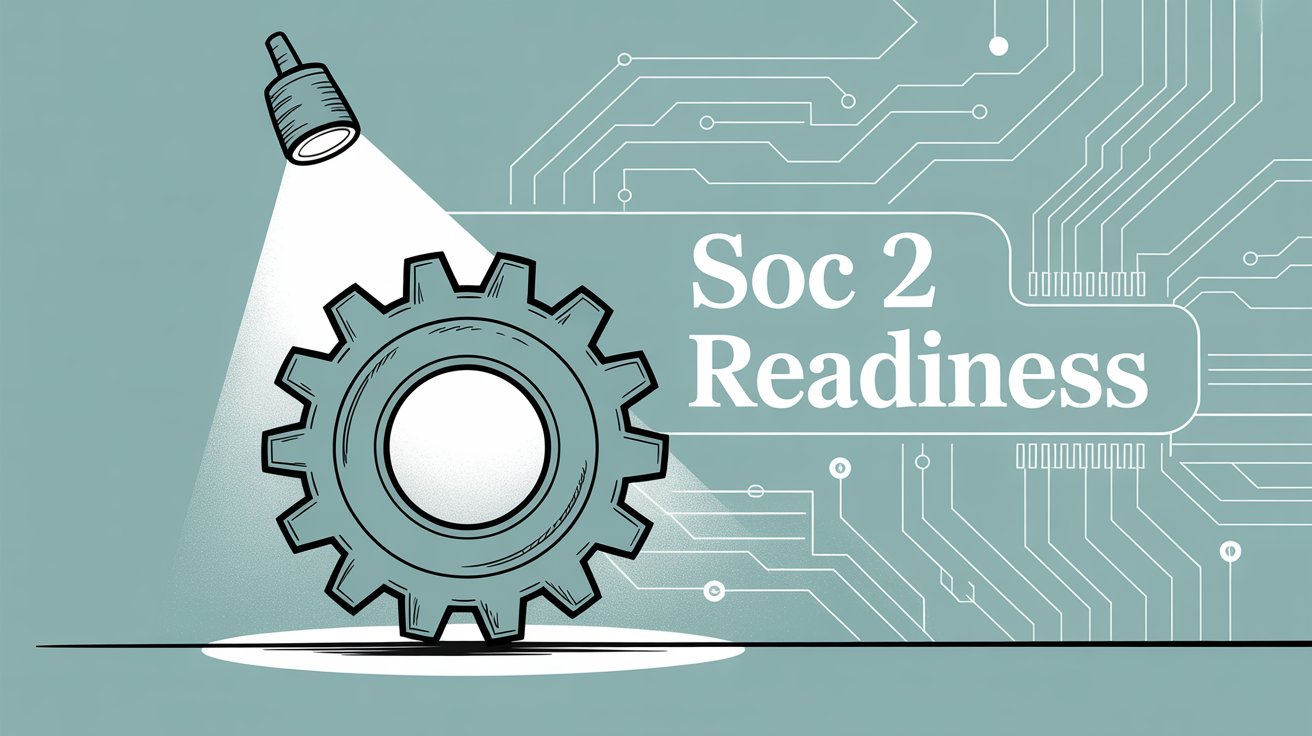
Can You Really Get SOC 2 in Days? The Truth About Lightning-Fast Compliance
You may have seen newer compliance solutions boasting slogans like "SOC 2 in days, not months." Is that for real? The answer: yes, audit readiness in days is achievable with heavy automation and expert help. But the formal audit still has its fixed time requirements.
What these offerings mean is they'll get all your controls implemented and evidence gathered extremely quickly, so that you can start (and finish) the audit as soon as humanly possible.
For example, Comp AI's platform is designed to compress the readiness phase to an unprecedented degree. Comp AI's approach combines AI automation with white-glove service to eliminate the typical delays in compliance. Some of the results Comp AI has seen:
- Comp AI has helped startups go from zero compliance to SOC 2 Type I audit-ready in as little as 24 hours. In one case, a customer had spent 4 months only about 30% through their SOC 2 using a traditional platform. After switching to Comp AI, they became "audit ready in a couple of days," according to their CTO.
- For SOC 2 Type II, Comp AI front-loads everything so that all prep work is done in about 14 days, after which the 3-month clock starts. You essentially enter the observation period fully prepared, with Comp AI's system auto-collecting evidence the whole way. At the end of the three months, you're immediately ready for the auditor's final review. In practice, that means you could sign up in January and have your SOC 2 Type II report by May, whereas traditionally it might be September or later.
How AI Automation Achieves SOC 2 in Days
It ties back to the strategies mentioned above, turned up to maximum:
- 100% Automation
Comp AI's AI agents integrate with your tech stack and immediately start gathering evidence (pulling configuration data, user lists, security settings) across 100+ systems. What might take a team weeks to manually compile is often done in minutes or hours by Comp AI's bots.
- AI-Assisted Remediation
The platform doesn't just collect data. It also identifies what's non-compliant and even suggests fixes. For instance, if an S3 bucket is found unencrypted, the AI will flag it and can provide the command or steps to secure it. This means any gaps can be closed rapidly, not lingering for weeks.
- Instant Policy Generation
All your required policies (InfoSec policy, access control policy, incident response) are generated by AI, customized to your company's context, and reviewed by Comp AI's experts. Instead of writing 20 policies from scratch (which could itself take a month or two), you get them handed to you almost immediately.
- Parallel, White-Glove Onboarding
Comp AI's compliance team essentially holds your hand (or does the work for you) in parallel to the AI. In the first 1-2 days, Comp AI connects all your integrations, tunes the platform to your environment, and ensures all critical controls are in place. It's like having a dedicated compliance SWAT team swarm on your company for a day. By the end, there's very little left to do except wait for the audit.
What "audit-ready" means: It indicates that all necessary controls, evidence, and documentation are prepared such that an audit can commence (and succeed). For a Type I, being audit-ready means you could literally call up an auditor to start tomorrow. For a Type II, it means you've started the 3-month observation with everything running smoothly from Day 1. You will still need to complete the 3-month period (nobody can cheat time on that), but you won't be spending that time scrambling to put controls in place. It's just letting the clock run while automated systems gather evidence.
For most companies, even if you're not in a super-rush, these automation-driven timelines provide a huge relief. Maybe you won't literally push for a 24-hour Type I, but knowing it could be done in a few weeks instead of a few months is comforting (and often a competitive advantage).
SOC 2 Cost Breakdown: Platform Pricing Comparison
Understanding the timeline is only half the equation. You also need to budget for SOC 2 costs:
| Cost Factor | Comp AI | Traditional Platforms |
|---|---|---|
| SOC 2 Type I | $5,000-10,000 | $15,000+ |
| SOC 2 Type II | $5,000-10,000 | $25,000+ |
With Comp AI, you're looking at $5,000-10,000 for SOC 2 Type I vs $15,000+ with traditional compliance platforms. For Type II, Comp AI typically charges $5,000-10,000 compared to $25,000+ with other solutions.
The difference in pricing is significant: you're saving 50-70% compared to traditional platforms while getting faster results and more automation. Plus, Comp AI offers transparent, month-to-month pricing with no hidden fees and a 100% money-back guarantee if you're not satisfied.

SOC 2 Timeline Summary: What to Expect in 2025
To recap, how long SOC 2 takes depends on your approach:
- Traditional route (no automation): Budget 6-12 months for a Type II, and a few months for a Type I. If you're starting from scratch, possibly up to 18 months in worst cases.
- Modern automated route: It's feasible to get Type I done in a matter of weeks and Type II in around 4-5 months total (with only around 2 weeks of heavy lifting, then a 3-month wait). With Comp AI specifically, Comp AI aims for 24 hours to a few days for Type I, and 14 days of prep for Type II (plus the required 3+ month audit window).
Ultimately, the key to a faster SOC 2 is preparation and partnership. Understand what needs to be done (use this guide as a reference), get the right tools and people to help, and tackle compliance in a systematic way. Whether you choose to leverage an AI-powered platform like Comp AI or not, being organized and proactive can cut your timeline down significantly.
And if you are on a tight deadline (like a potential customer or investor is waiting on that SOC 2 report), know that solutions exist to meet those demands. Book a demo with Comp AI to see how Comp AI can get you audit-ready in record time while staying within budget.
Remember: once you earn your SOC 2, it becomes an ongoing journey. But one that gets easier if you've built strong habits and use continuous automation. Instead of viewing SOC 2 as a one-off project that consumes a year, view it as a manageable process that, with today's technology, can align with your agile business pace.
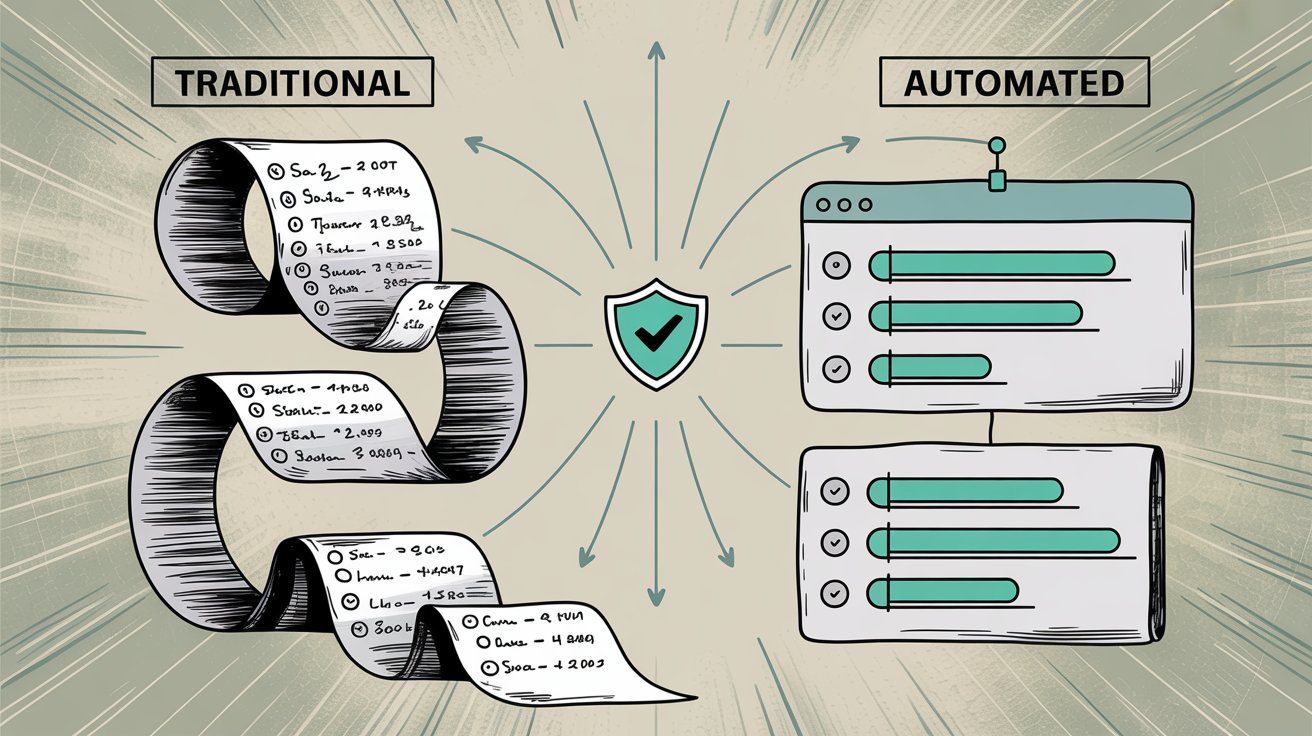
Frequently Asked Questions About SOC 2 Timelines
Q: Can I really get SOC 2 compliant in 24 hours?
Yes, audit readiness in 24 hours is achievable for SOC 2 Type I with heavy automation and AI. Comp AI has helped startups go from zero to audit-ready in as little as a day. However, this assumes your infrastructure is already reasonably secure. The actual audit and report issuance will still take a few additional weeks.
Q: Do I need to complete SOC 2 Type I before Type II?
No, you're not required to do Type I first. However, many organizations choose to do Type I as a quick win to validate controls and satisfy immediate customer demands while working toward the longer Type II. Type I can be turned around much faster since there's no observation period.
Q: What's the minimum observation period for SOC 2 Type II?
The minimum observation period for SOC 2 Type II is 3 months. This is set by the SOC 2 standards. You and your auditor can agree on a longer period (6 or 12 months), but 3 months is the absolute minimum to demonstrate that controls operated effectively over time.
Q: How much does SOC 2 compliance cost?
With Comp AI, SOC 2 Type I and SOC Type 2 costs $5,000-10,000 compared to $15,000-$25,000+ with other platforms and traditional solutions. These all-in prices include platform access, expert support, and audit coordination.
Q: What factors most influence the SOC 2 timeline?
The biggest factors are: your initial security maturity, internal resources dedicated to compliance, use of automation tools, scope of the audit, and responsiveness to auditor requests. Companies with solid security foundations using automation platforms can complete SOC 2 in a fraction of the time compared to those starting from scratch manually.
Q: Can I speed up the SOC 2 Type II observation period?
No, the observation period cannot be shortened below 3 months. This is a requirement of the SOC 2 Type II audit. However, you can speed up everything else: the preparation phase (by using automation), the evidence collection during the observation period (by using continuous monitoring), and the audit review phase (by having organized, complete evidence).
Q: What happens if I fail my first SOC 2 audit?
If issues are found during the audit, you'll typically have a chance to remediate them before the final report is issued. Comp AI offers a 100% money-back guarantee and works closely with you to ensure audit success. Comp AI's pre-vetted auditors are familiar with Comp AI's platform, which helps avoid surprises and ensures a smooth process.
Q: How often do I need to renew SOC 2?
SOC 2 reports are typically valid for one year, so most companies renew annually. However, with continuous monitoring and automation (like what Comp AI provides), renewals become much easier. You're essentially always audit-ready, so the annual renewal is just a formality rather than a massive project each year.
Share this article
Help others discover this content
More from Compliance Hub
Explore more insights and stay ahead of regulatory requirements.
SOC 2 Penetration Testing Requirements (2025 Guide)
Learn how penetration testing supports SOC 2 compliance. Get practical guidance on testing types, frequency, costs, and auditor expectations.
SOC 2 for AI Companies: Complete Guide (2025)
Your complete 2025 guide to SOC 2 for AI companies. Covers requirements, costs, timelines, and how to achieve compliance in weeks instead of months.
Continuous Compliance Monitoring: Guide (2025)
Learn how continuous compliance monitoring keeps you audit-ready 24/7. Save hundreds of hours and close deals faster with real-time visibility.